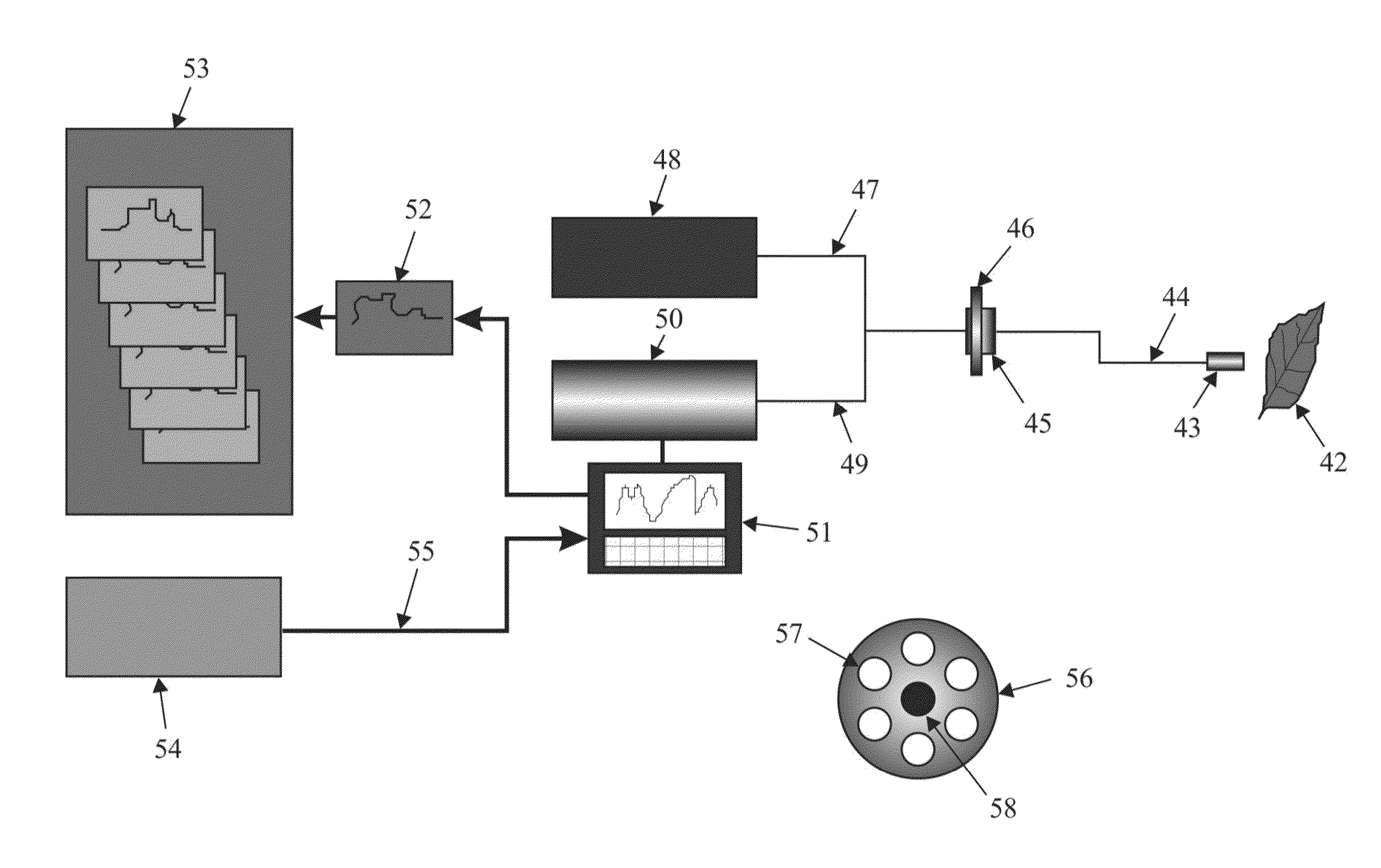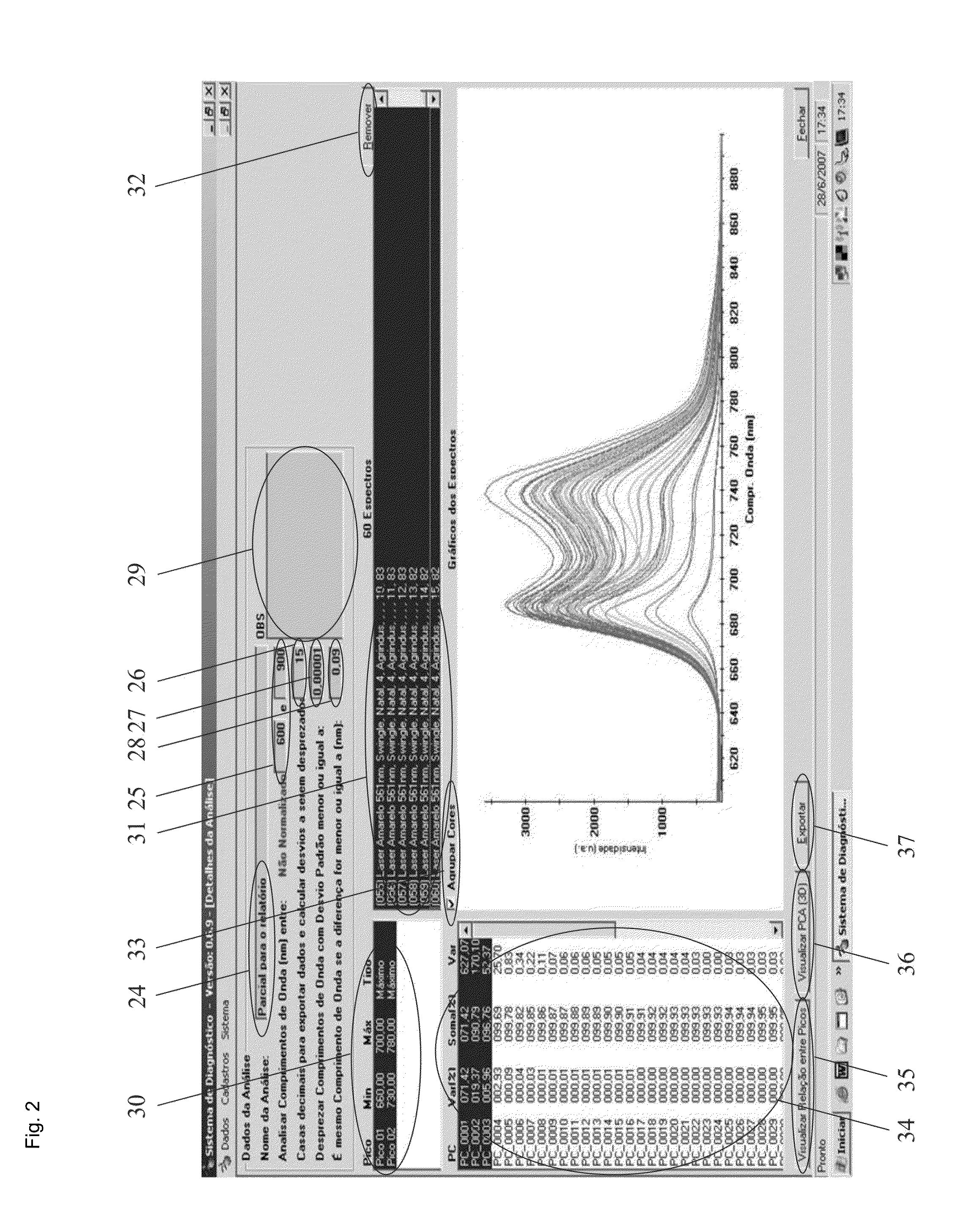Method, apparatus and system for diagnosis of stress and disease in higher plants
a technology for stress and disease in plants, applied in the direction of fluorescence/phosphorescence, analysis by material excitation, instruments, etc., can solve the problems of high phytosanitary costs, high cost of fertilizers, and reduced variability
- Summary
- Abstract
- Description
- Claims
- Application Information
AI Technical Summary
Benefits of technology
Problems solved by technology
Method used
Image
Examples
example
[0062]In the graph of FIG. 6, a typical spectra obtained in the portable system with laser at 561 nm for Hamlin in “Cravo” lime rootstocks are presented. This set of samples presents healthy plants (59), with Decline (60), with Citrus Sudden Death (61), with asymptomatic Greening (62) and symptomatic Greening (63).
[0063]PCA analyses were performed with the data of the whole set of collected leaves for a better separation of diseases, as shown in FIG. 7, containing the same type of samples: healthy (64), with CSD (65), with Decline (66), with asymptomatic Greening (67) and with symptomatic Greening (68).
[0064]From this set of data, a software was constructed which classifying model is capable of performing the diagnosis of Hamlin leaves in “Cravo” lime rootstocks with a precision above 80%.
PUM
| Property | Measurement | Unit |
|---|---|---|
| wavelength | aaaaa | aaaaa |
| wavelength | aaaaa | aaaaa |
| wavelength | aaaaa | aaaaa |
Abstract
Description
Claims
Application Information
 Login to View More
Login to View More - R&D
- Intellectual Property
- Life Sciences
- Materials
- Tech Scout
- Unparalleled Data Quality
- Higher Quality Content
- 60% Fewer Hallucinations
Browse by: Latest US Patents, China's latest patents, Technical Efficacy Thesaurus, Application Domain, Technology Topic, Popular Technical Reports.
© 2025 PatSnap. All rights reserved.Legal|Privacy policy|Modern Slavery Act Transparency Statement|Sitemap|About US| Contact US: help@patsnap.com



